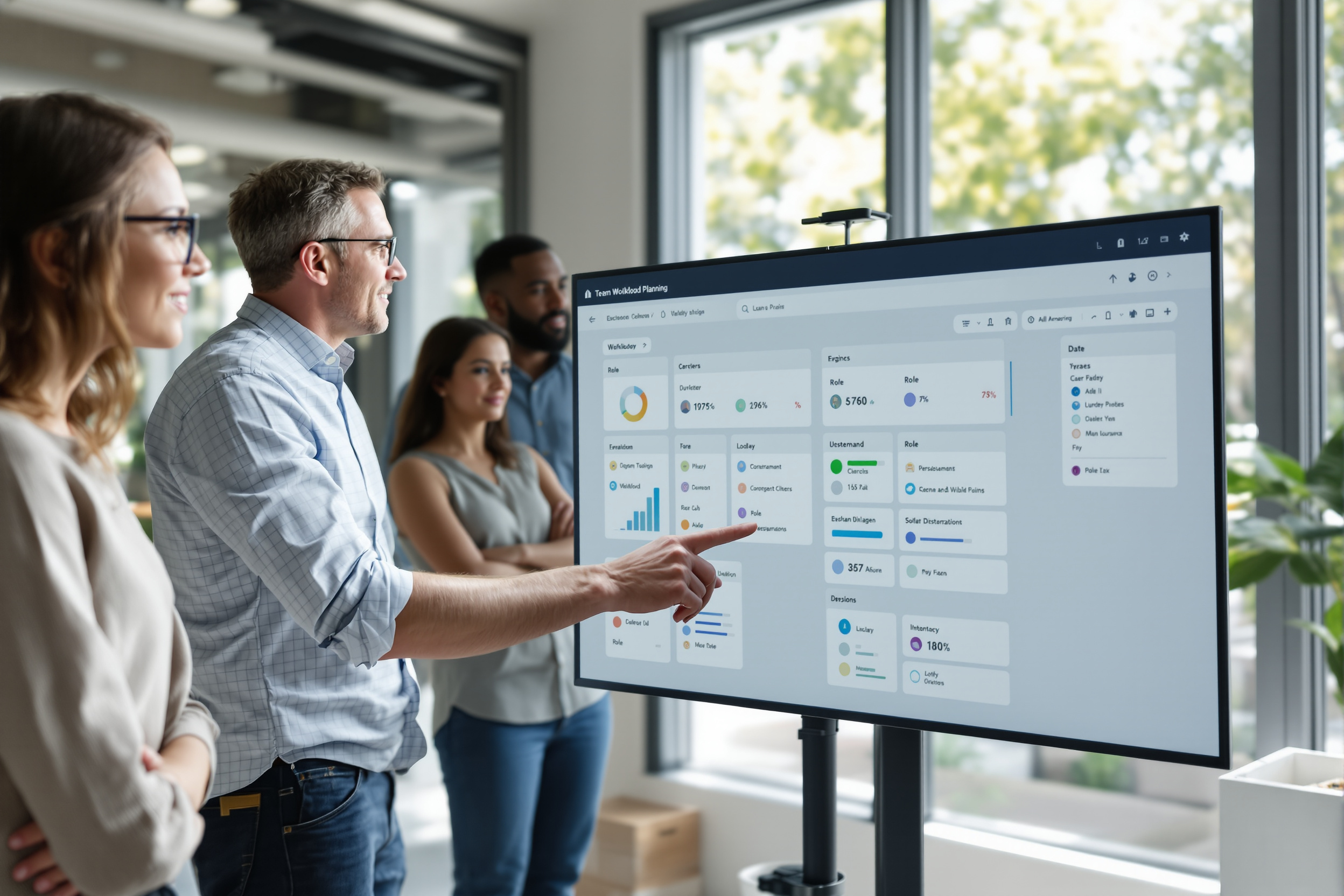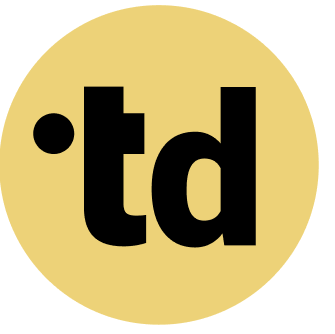Key Takeaways
A unified tool for team workload planning is essential to combat burnout, as 61 percent of German employees fear overload.
Disconnected tools amplify chaos; a single source of truth can increase a team's profitability by up to 23 percent through better engagement.
Integrating AI agents into a central workload plan is key for hybrid teams (humans and AI agents), as 73 percent of employees using AI report higher productivity.
The modern workplace is a frantic dance of deadlines, hybrid schedules, and shifting priorities. For Team Architects, the pressure to orchestrate this complexity is immense. In Europe, 45 percent of workers feel exhausted post-work, citing excessive workload as the primary cause. Traditional methods like spreadsheets and siloed apps only add to the confusion, leading to duplicated efforts and missed goals. The hero's journey for any modern team involves conquering this chaos. The solution lies not in working harder, but in working smarter with a unified approach to team workload planning in a single tool. This transforms ambiguity into clear, actionable plans, turning overload into streamlined success and making bots and humans click.
Practical Framework for Team Architects
As a Team Architect, you can apply these principles to your organization:
- Map Current State: Document existing roles and responsibilities using a tool like teamdecoder.
- Identify Gaps: Where are roles unclear? Where do humans and AI agents overlap?
- Define Clear Boundaries: Specify which tasks are handled by humans vs. AI agents.
- Create Accountability: Assign clear decision rights for each role.
- Iterate and Improve: Continuously refine based on team feedback.
Confronting the Chaos of Modern Work Overload
The rhythm of work is off-beat for many teams, leading to a crescendo of stress. In Germany, the fear of burnout affects many the workforce, a significant jump from pre-pandemic levels. This isn't just a feeling; it translates to real economic impact, with rising sickness rates depressing German economic growth by an estimated one percent annually. The core issue is often a lack of clear workload management, a problem that manual tracking can't solve.
Teams are the heroes of Many organizations, but even heroes get tired. When roles and responsibilities are vague, performance suffers directly. Studies show undefined work expectations are one of the top five stressors for employees. This ambiguity creates friction and inefficiency, setting the stage for project delays and frustrated teams. A better way to manage workload and capacity is not just a nice-to-have; it's essential for survival and growth.
This environment of constant pressure and unclear direction is where the need for a new approach becomes critical.
Why Disconnected Tools Amplify Team Friction
Many organizations attempt to manage workloads with a patchwork of tools, from spreadsheets to various project management apps. This approach creates information silos, where up to most managers in Germany cite inefficient coordination as a top productivity blocker. When data is scattered, getting a clear picture of who is doing what becomes nearly impossible. This fragmentation directly undermines effective workload management.
This lack of a central hub leads to several predictable problems. Here are four common failure points:
- Inaccurate Capacity Planning: Without a unified view, managers can't see that a team member is already at 110 percent capacity before assigning new tasks.
- Duplicated Work: Two team members can unknowingly work on the same task, wasting at least five hours per week on average.
- Lack of Accountability: When tasks live in different systems, accountability blurs, with leaders citing it as a major development need.
- Increased Administrative Burden: Teams spend up to four hours per week just trying to sync information between disconnected tools.
The reality is that using multiple, non-integrated tools for team workload planning costs an organization an average of in lost productivity. A single, integrated platform is the only way to get a true, real-time view of your team's capacity and progress.
Moving beyond these fragmented systems is the first step toward building a resilient and efficient team structure.
Teams Just Wanna Have Fun: Achieving Flow with a Single Source of Truth
Imagine a world where every team member starts their day knowing exactly what their priorities are. This clarity is the promise of team workload planning in a single tool. By centralizing all tasks, projects, and responsibilities, you eliminate the guesswork. This approach has been shown to increase a team's profitability by up to through higher engagement alone. It provides a transparent overview of all ongoing work, making resource allocation a strategic advantage.
Our Playful Tip: Use a central tool to map out every role and its core duties. This simple act of defining roles and responsibilities can reduce project conflicts by over 30 percent. When Many people knows their part, the team's energy shifts from navigating confusion to driving results. You can try teamdecoder for free to see this in action. This clarity is foundational for building effective team structures.
A unified platform doesn't just track tasks; it builds a shared understanding of the team's mission. This alignment is what allows teams to enter a state of flow, where progress feels effortless and fun. This newfound clarity paves the way for integrating more advanced collaborators, including AI agents.
Sweet Teams Are Made of This: Weaving AI into Your Workflow
The future of work is a hybrid team (humans and AI agents) of humans and AI agents working in concert. Already, many European organizations are using AI in some capacity. A single tool for team workload planning is the perfect framework for this integration. It allows you to assign tasks to AI, track their progress, and see how their work fits into the larger team capacity. This ensures AI is a true team player, not just a separate process.
Deep Dive: Integrating AI agents requires a new level of organizational development. Your workload tool should allow you to define roles for bots just as you do for humans. For example, an AI agent can be assigned the role of "Data Analyst," responsible for generating weekly reports. Employees who use AI report feeling 73 percent more productive, showcasing the power of this human-in-the-loop system. See our pricing to find a plan that fits your hybrid team needs.
This strategic AI agent integration frees up human team members to focus on high-value creative and strategic tasks. It's not about replacing people; it's about augmenting their capabilities. With a clear plan, you can make bots and humans click seamlessly, creating a powerful, future-ready workforce.
Architect Insight: A Blueprint for Balanced Workloads
For Team Architects, designing a balanced system is both an art and a science. A unified workload tool gives you the data to make informed decisions, moving beyond guesswork. With the right platform, you can reduce team burnout rates by up to some within the first six months. The key is to follow a structured approach to implementation and governance.
Our Playful Tip: Start by implementing a clear process for workload management. Here are five steps to guide you:
- Define All Roles: Clearly document the key responsibilities for every position, including any integrated AI agents.
- Estimate Task Durations: Work with your team to create realistic time estimates for common tasks, improving future dynamic resource allocation.
- Set Capacity Thresholds: Establish a maximum workload for each team member, such as 35 focus hours per week, to prevent overload.
- Hold Weekly Check-ins: Use the tool's dashboard to review upcoming workloads and rebalance tasks proactively.
- Analyze and Adapt: After 90 days, review the data to identify bottlenecks and refine your process for continuous improvement.
Teams that use a dedicated tool for workload planning complete projects faster than those relying on manual methods.structured approach provides the governance needed for modern, hybrid teams to thrive. It transforms the abstract concept of workload management into a concrete, repeatable practice.
This blueprint not only improves efficiency but also fosters a culture of transparency and trust.
The Result: From Constant Overload to Confident Overflow
Adopting team workload planning in a single tool delivers tangible results that resonate across the organization. It's about creating a sustainable pace where teams can deliver their best work without burning out. Companies with Companies with optimized workload management see a reduction in employee turnover.ates a positive cycle: clarity reduces stress, which boosts morale, which in turn improves productivity.
The transformation is clear. Instead of missing deadlines, teams deliver projects on time and within budget, improving client satisfaction by an average of a significant portion. The visibility gained from a central tool allows managers to anticipate bottlenecks weeks in advance. This proactive stance is a hallmark of high-performing teams and a key element of successful change management. Take the first step by exploring a free online course on workforce transformation.
Ultimately, the goal is to move from a culture of overload to one of overflow-where the team has the capacity, clarity, and confidence to take on new challenges. Try teamdecoder for free - shape your team and make change feel like play!
More Links
Federal Statistical Office of Germany provides tables on the gross domestic product, personnel concept (Germany).
Federal Statistical Office of Germany offers an article on labor productivity in Germany.
Federal Ministry of Finance presents an analysis of productivity development in Germany.
Federal Ministry of Labour and Social Affairs publishes a research report on the quality of work in Germany.
Federal Ministry of Labour and Social Affairs provides information on improving the quality of work and changes in work culture.
Federal Institute for Occupational Safety and Health offers a publication on hybrid, location-flexible, and multi-local work.
Deloitte shares insights on Human Capital Trends in Germany.
Wikipedia provides a comprehensive article on the concept of workload.
FAQ
What are the signs that my team needs a workload planning tool?
Common signs include frequently missed deadlines, team members reporting burnout or stress, confusion about task ownership, duplicated work, and a general lack of visibility into who is working on what. If 45 percent of your workers feel exhausted, it's a clear sign.
Will a single tool create more administrative work for my team?
Initially, there is a small setup period. However, a good tool quickly reduces administrative work by automating reporting, centralizing information, and eliminating the need to sync data between multiple spreadsheets and apps, saving an average of four hours per week.
How does this tool support organizational development?
It provides the data and structure needed for strategic organizational development. By clarifying roles, mapping workflows, and managing capacity, it helps you design more effective team structures, manage change, and scale your operations efficiently.
Is teamdecoder suitable for small startups?
Yes, teamdecoder is designed for teams of all sizes. For startups (up to five employees), it provides a framework to scale roles and responsibilities from day one, preventing the chaos that often accompanies growth. Our free plan is a great starting point.
How does workload planning improve roles and responsibilities?
A workload planning tool requires you to define who is responsible for each task. This process inherently clarifies roles and responsibilities across the entire team, reducing the ambiguity that negatively impacts performance.
Where can I see the pricing for teamdecoder?
You can find all our plans and features on our transparent pricing page. See our pricing.





